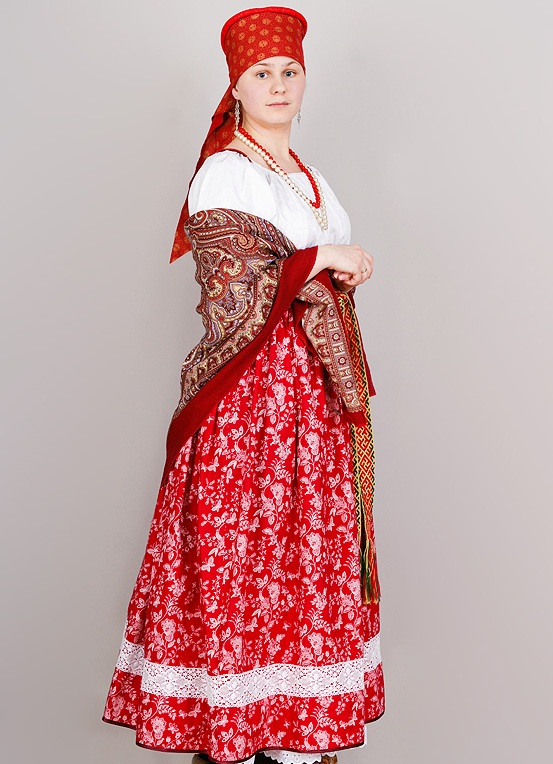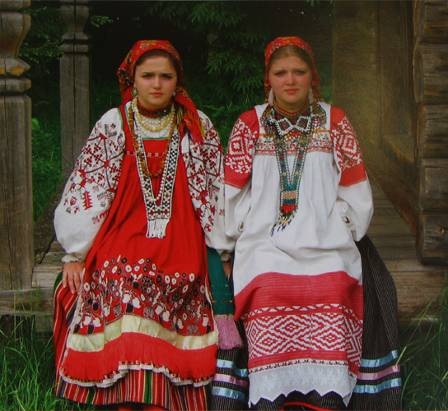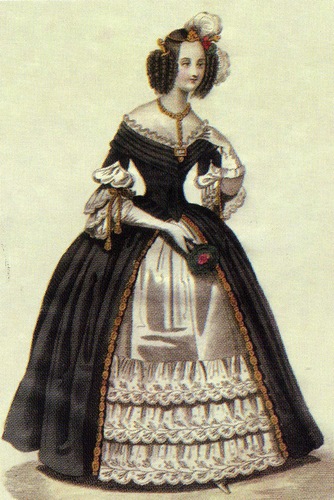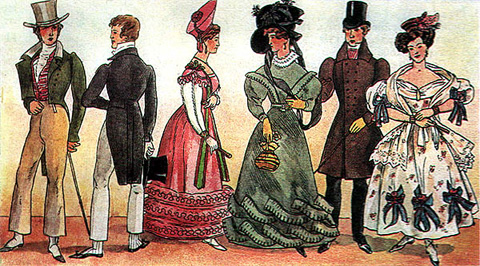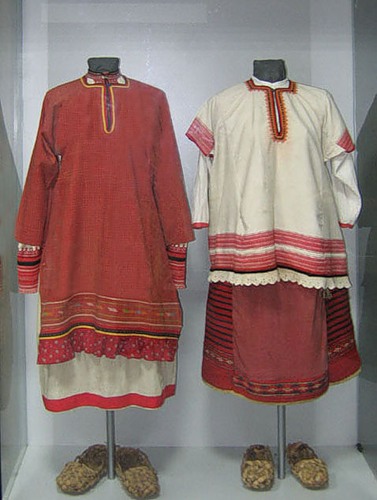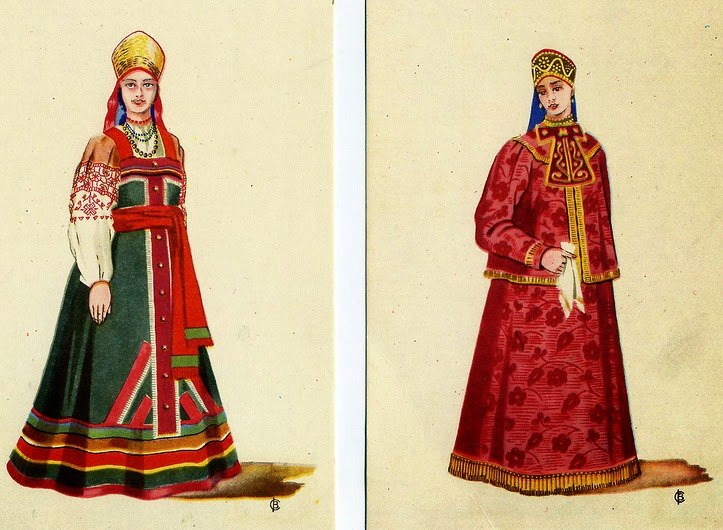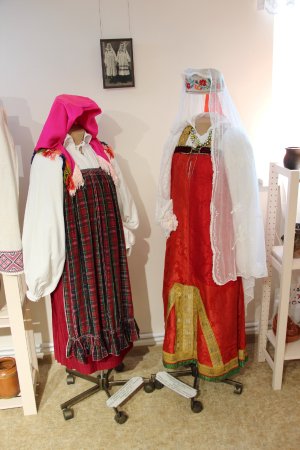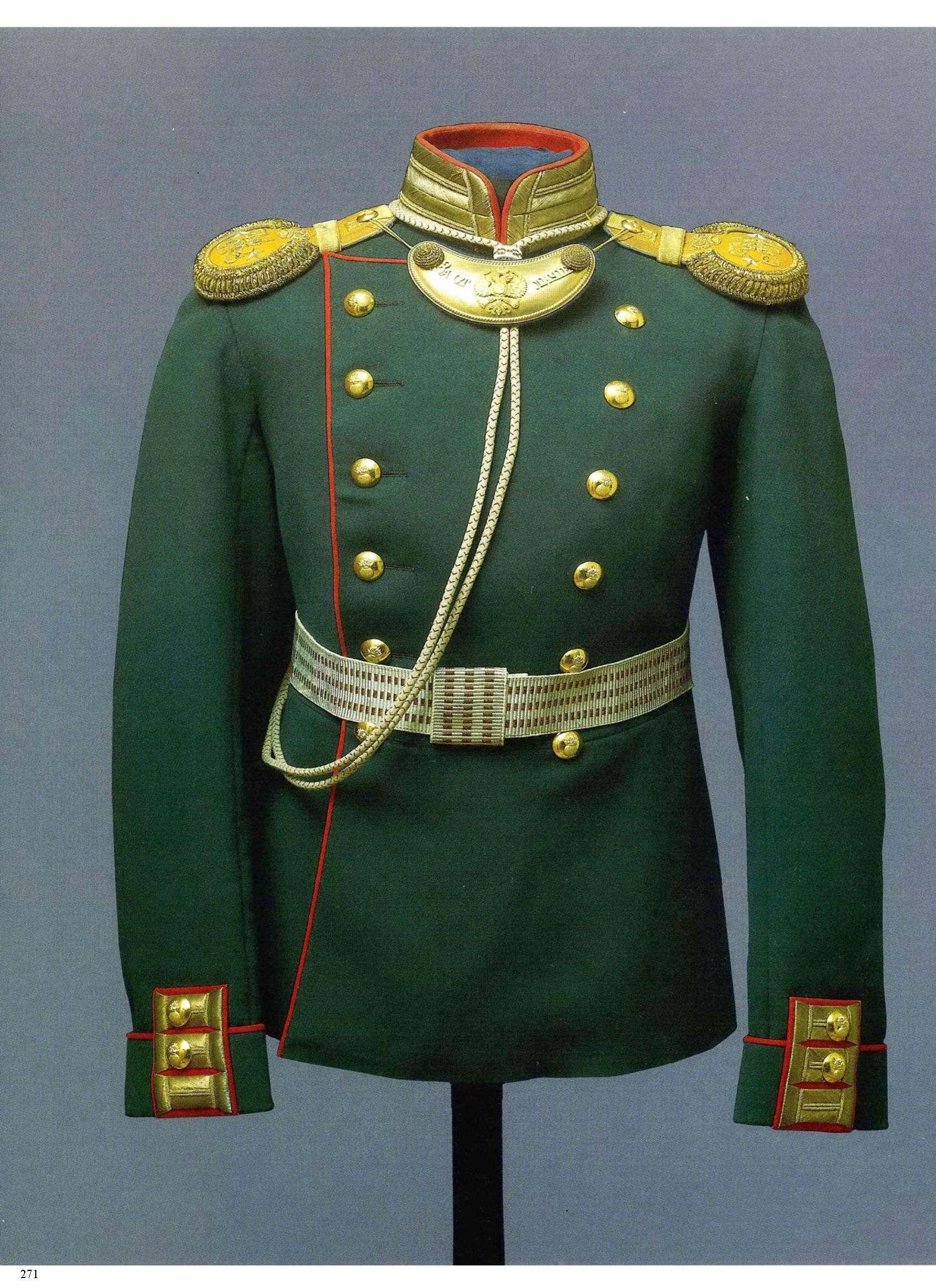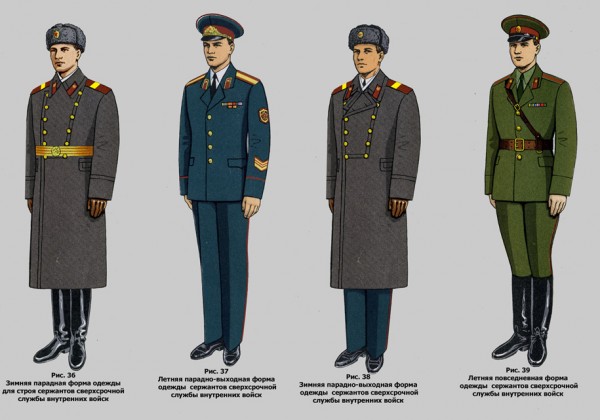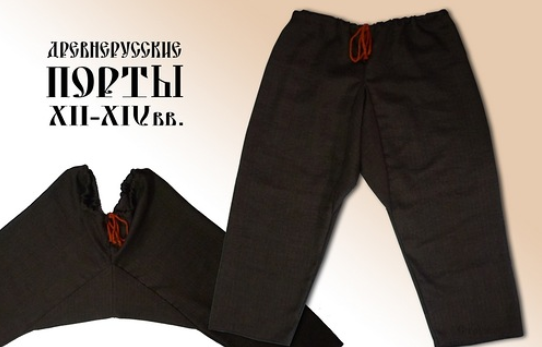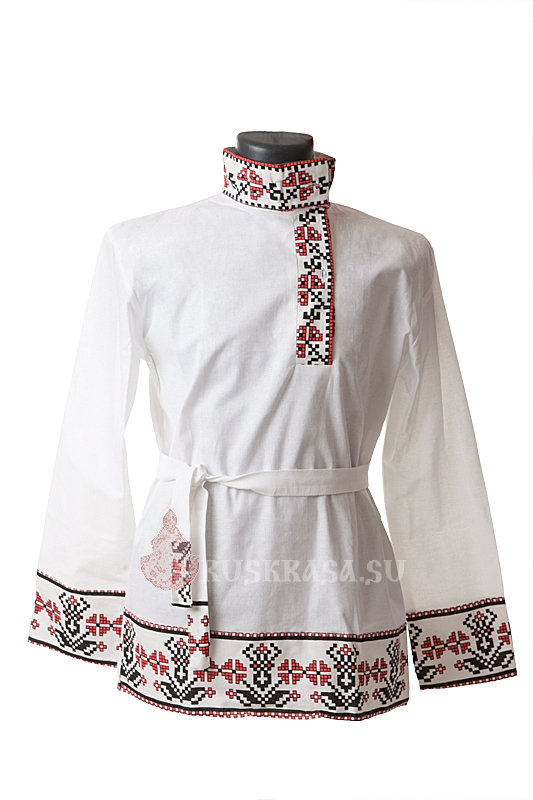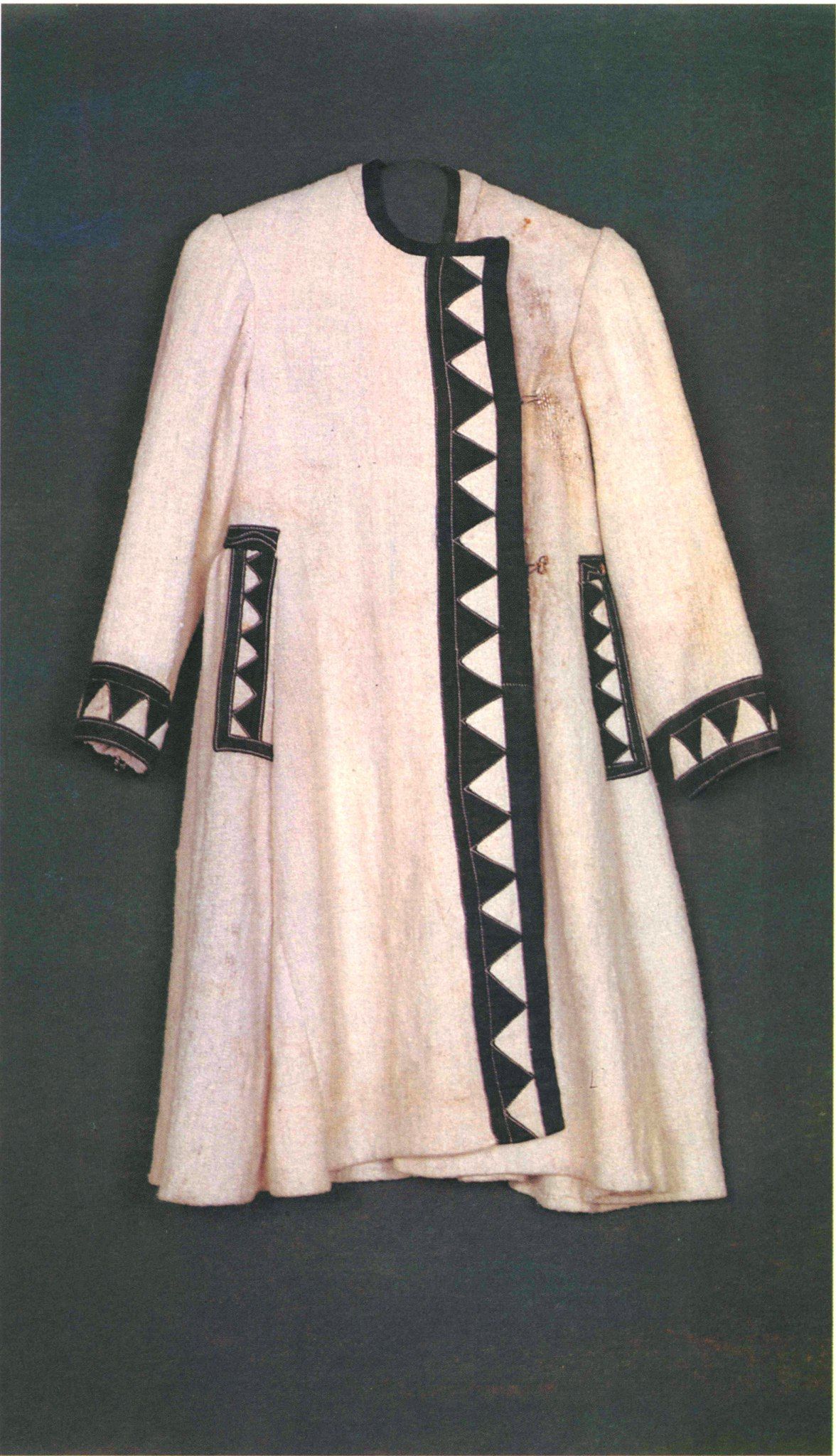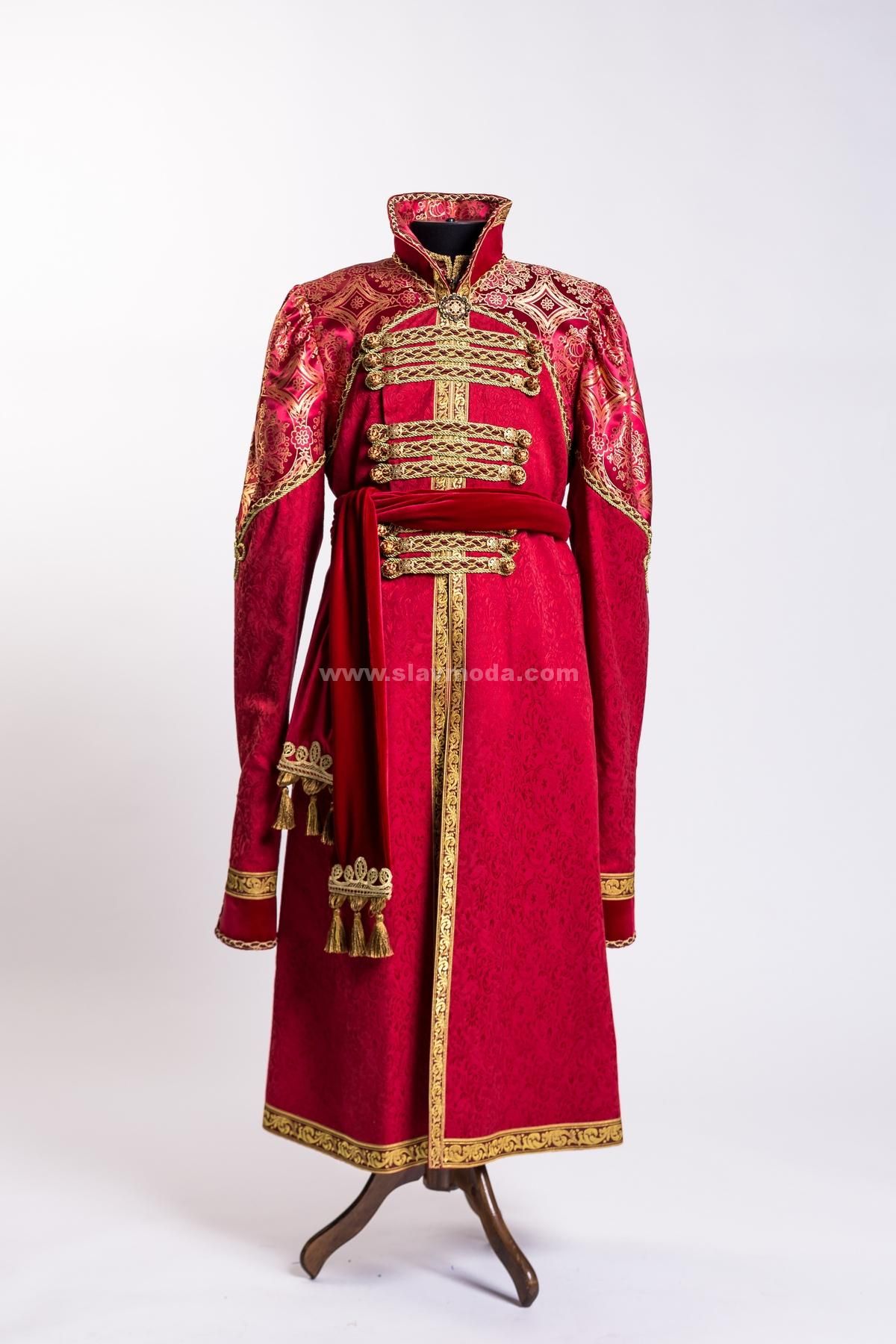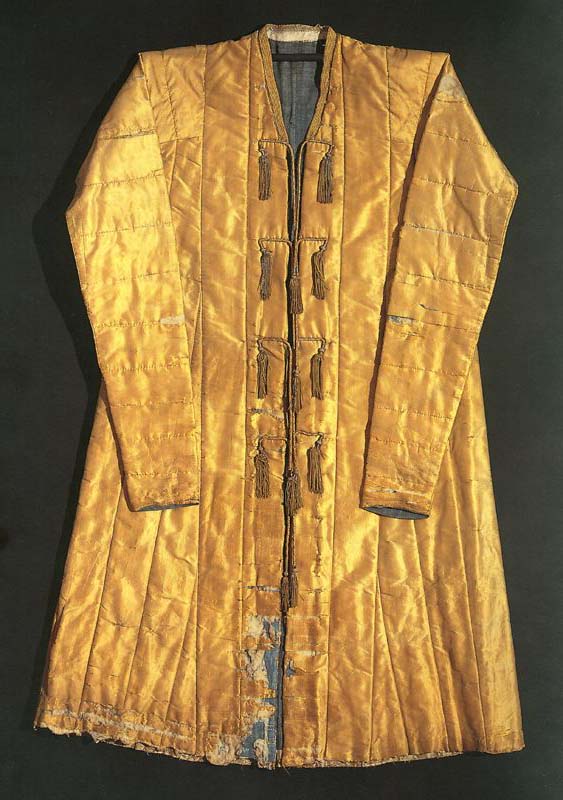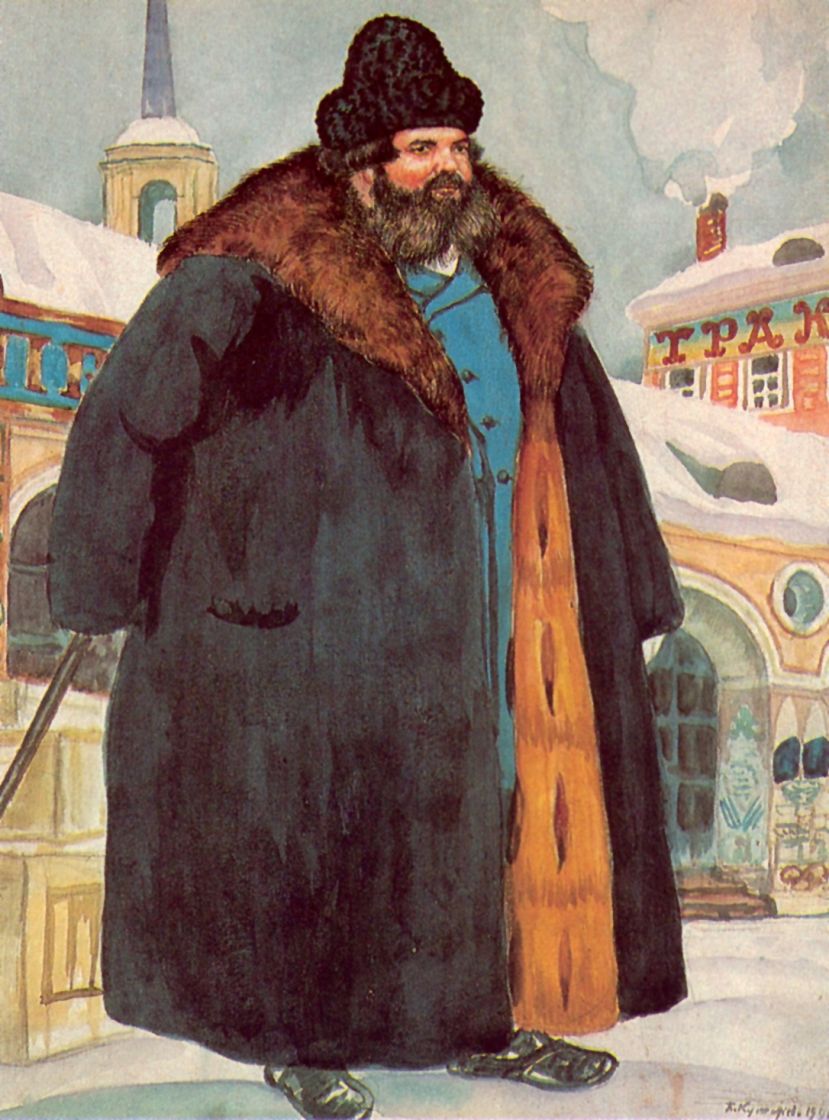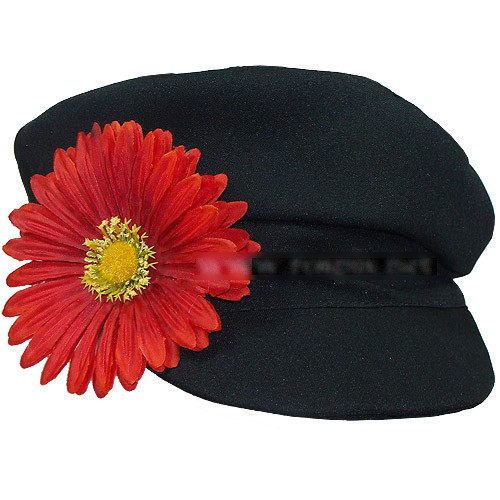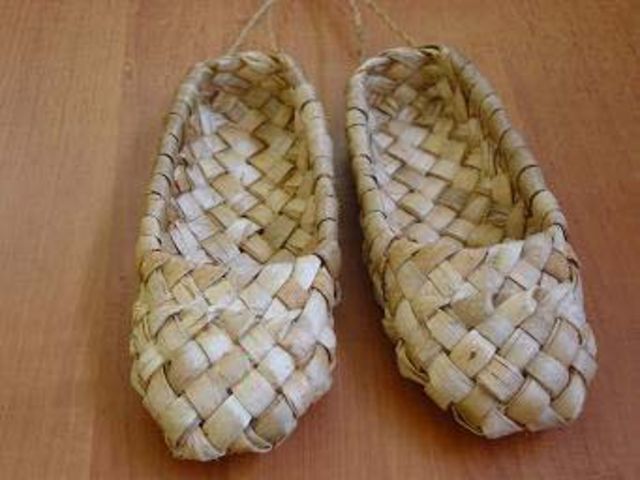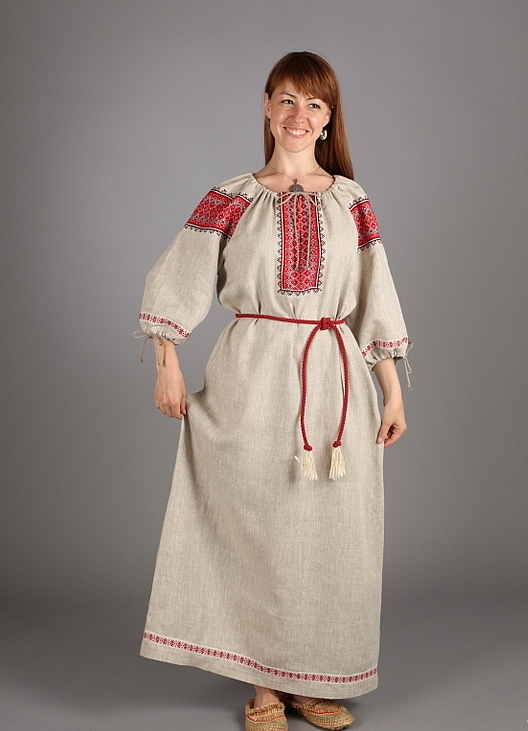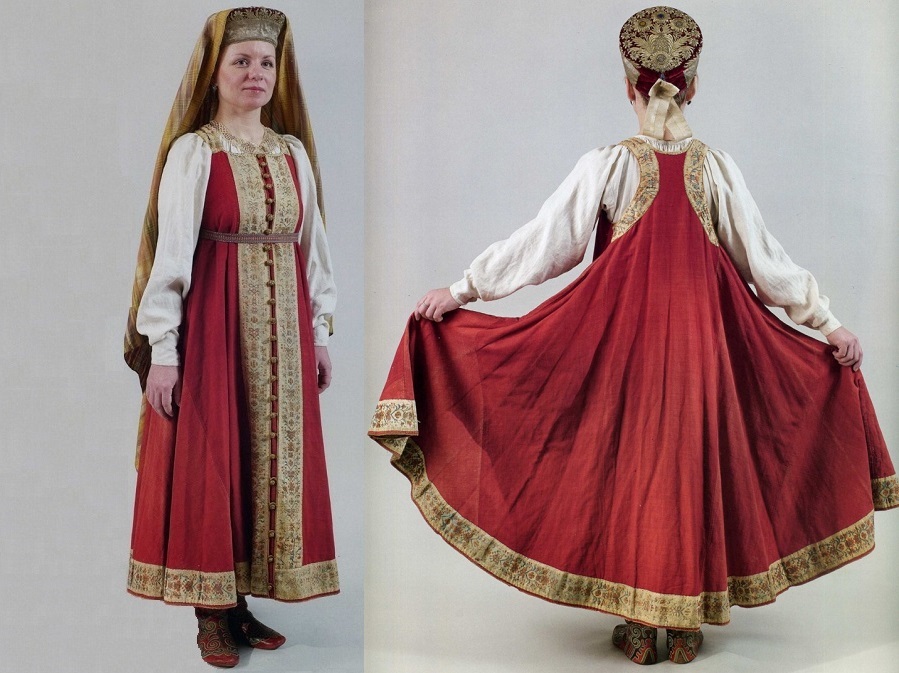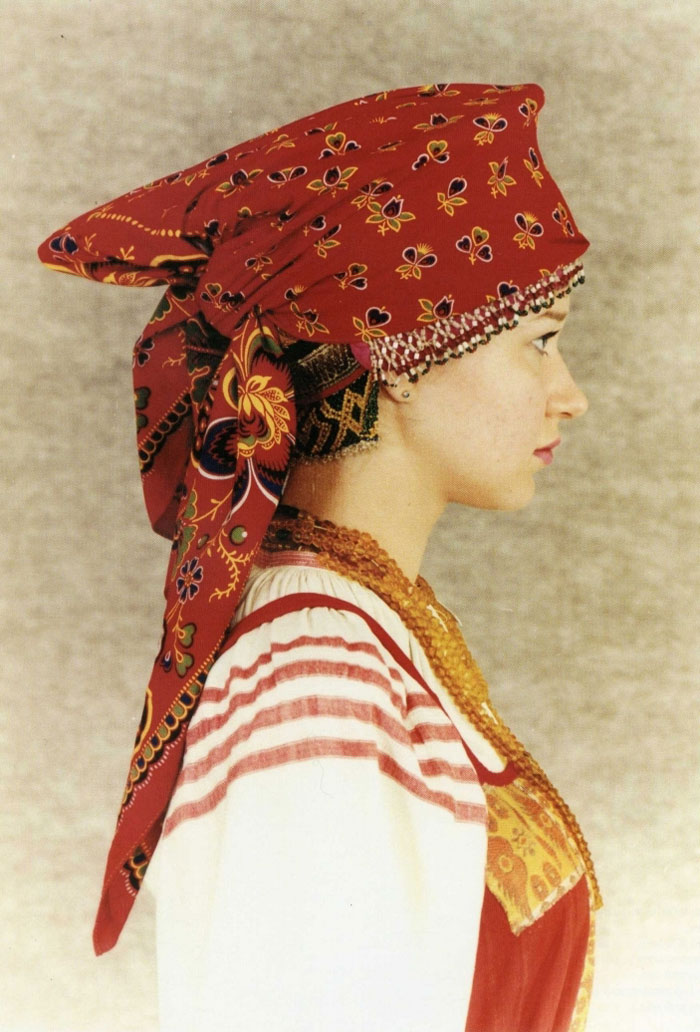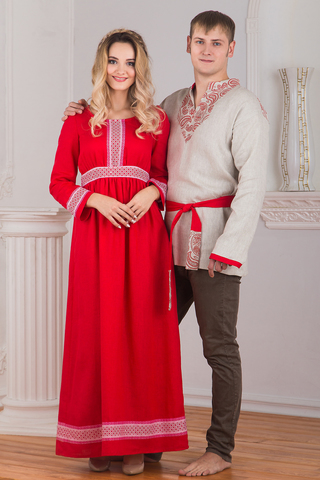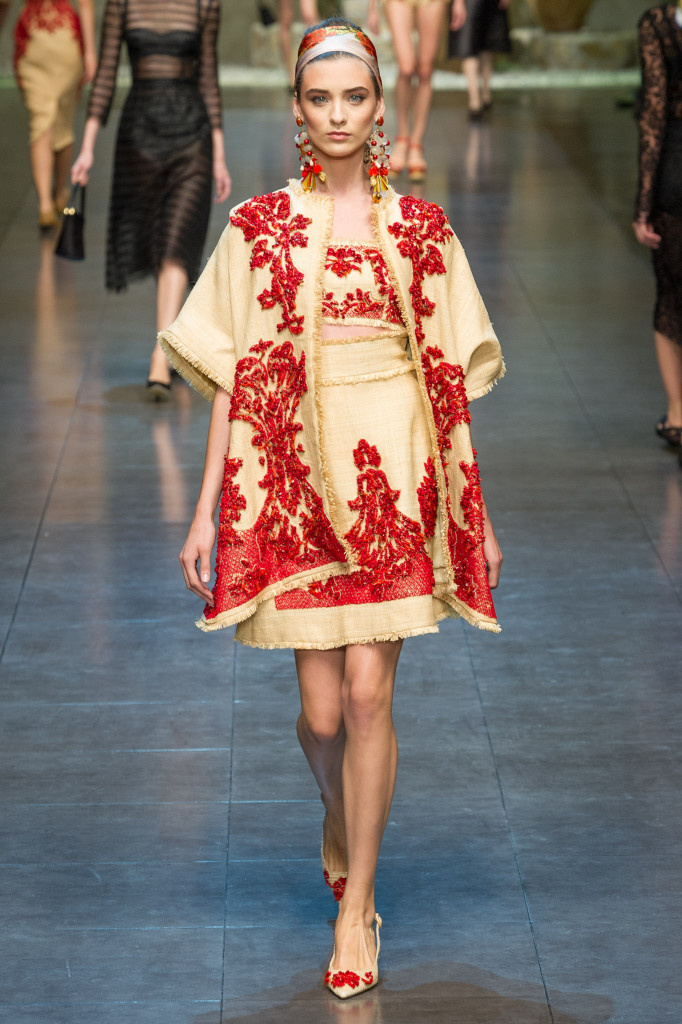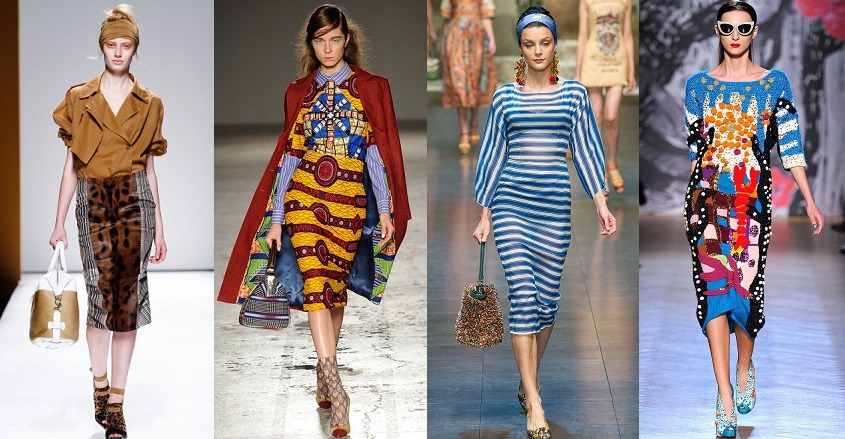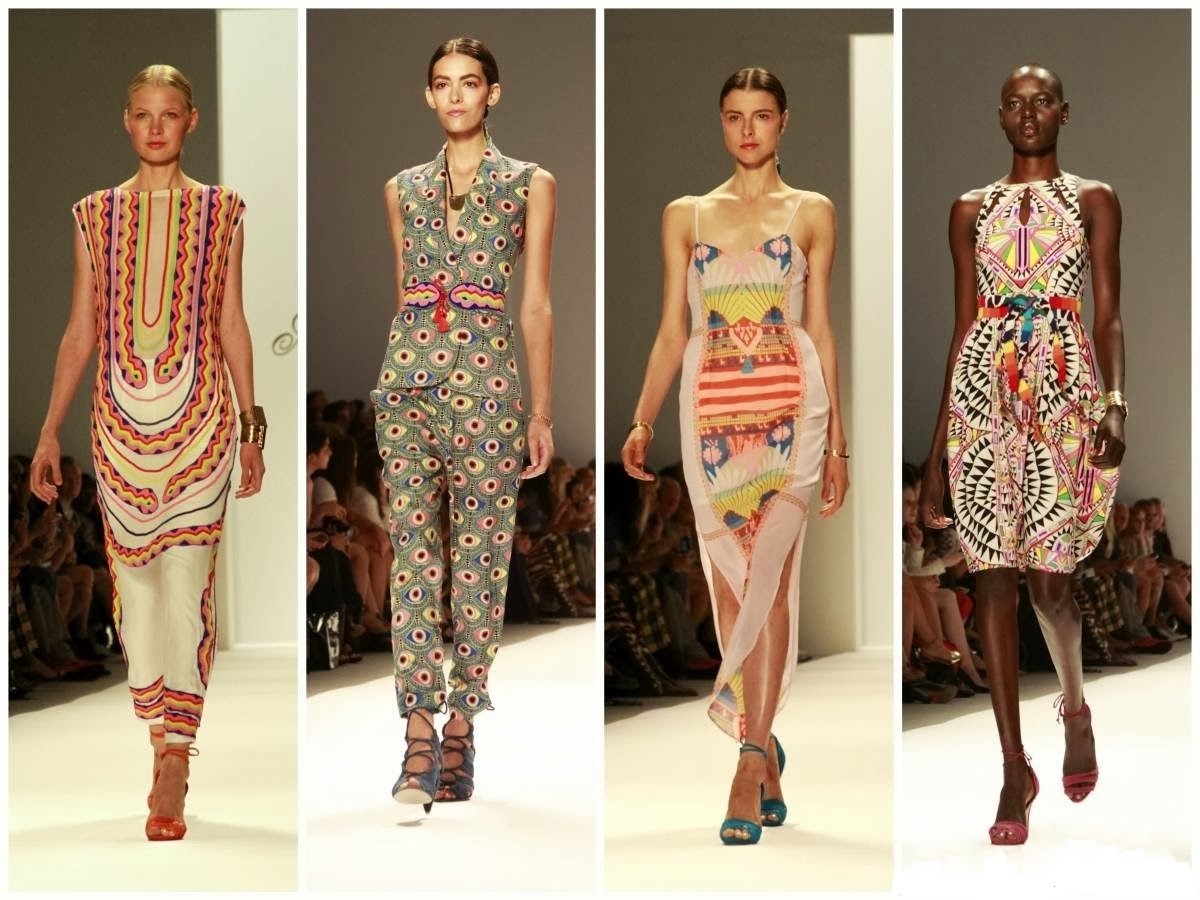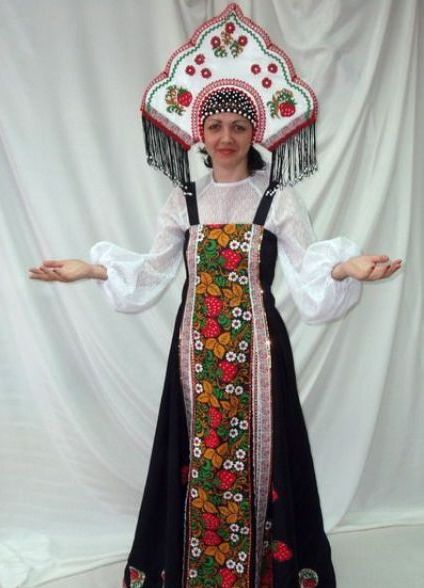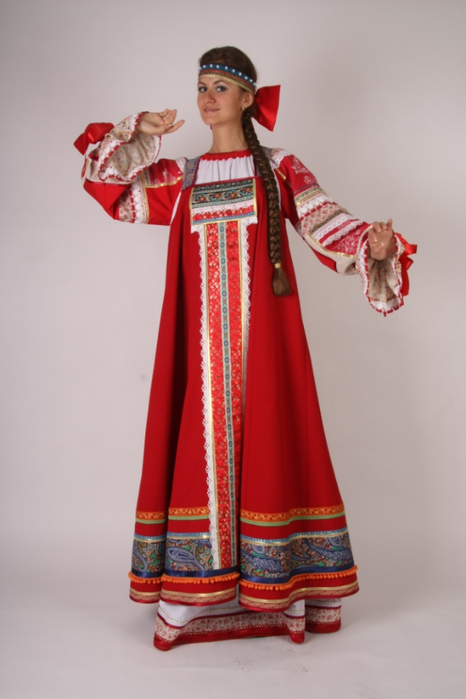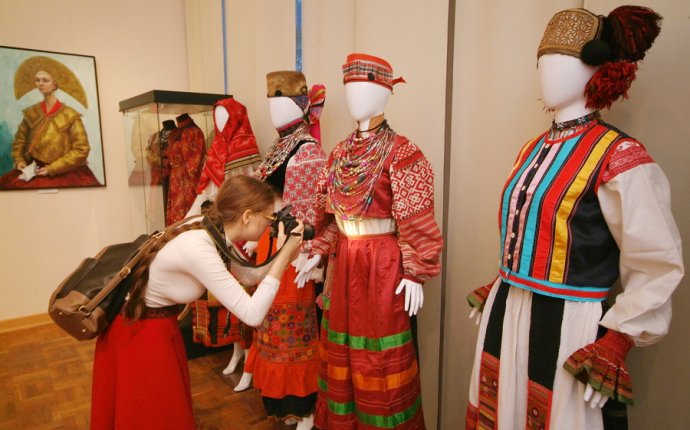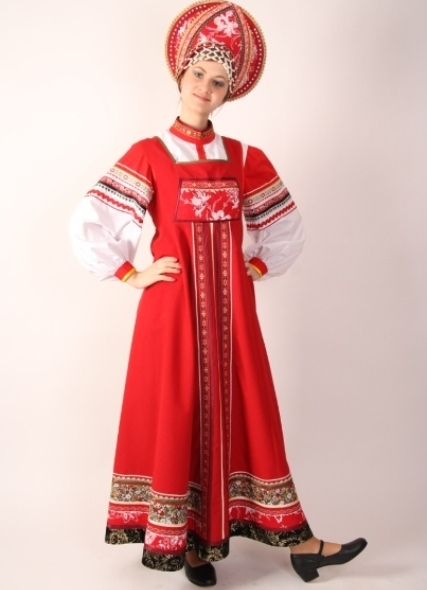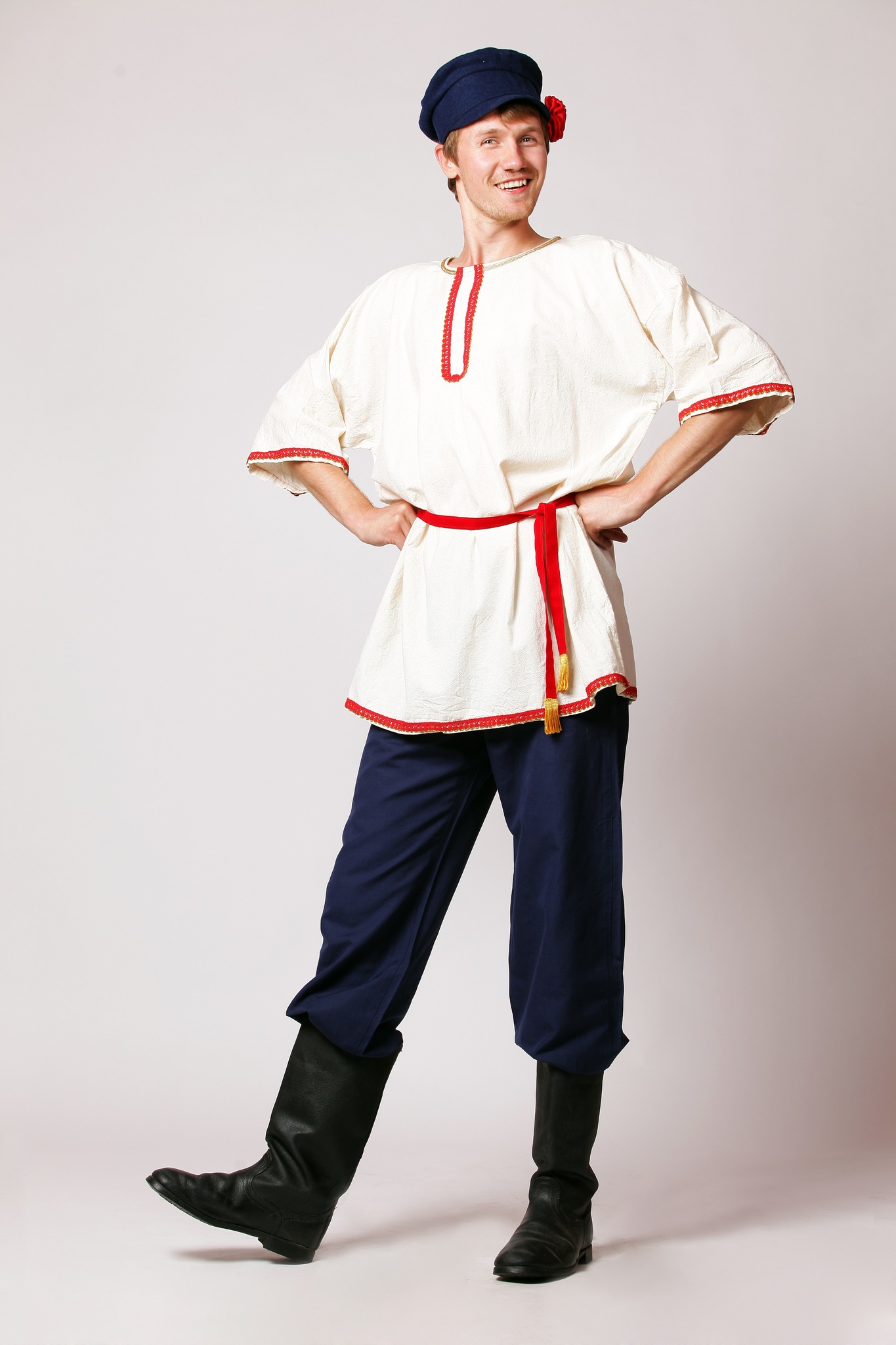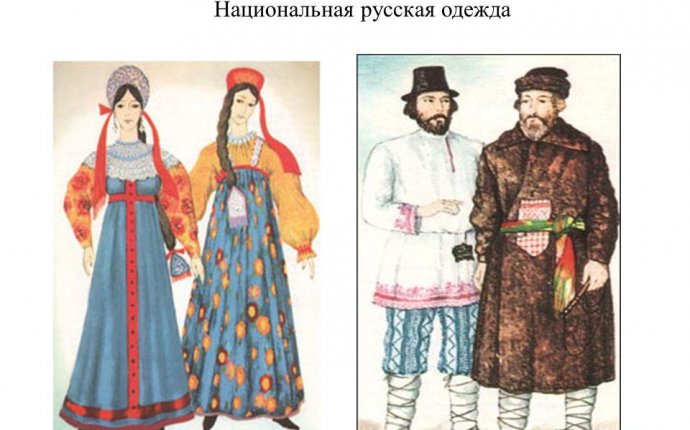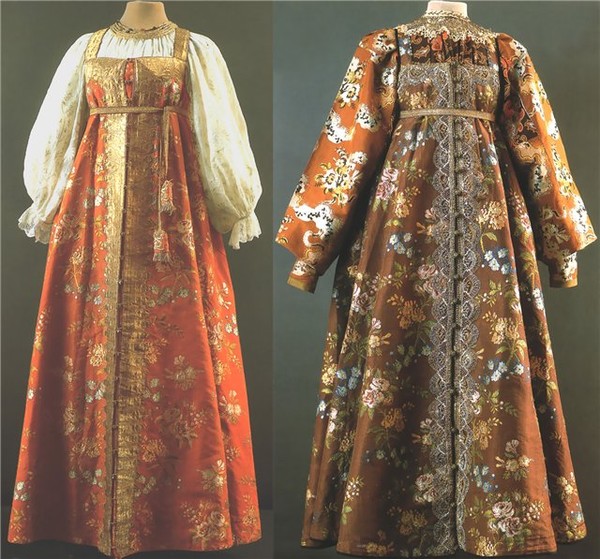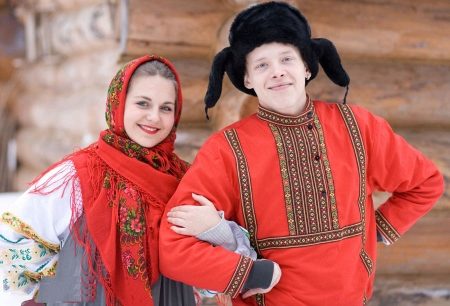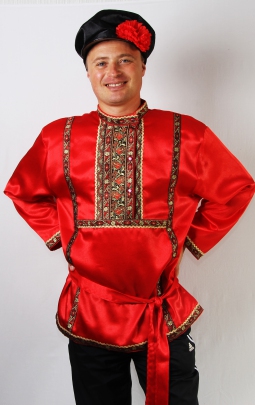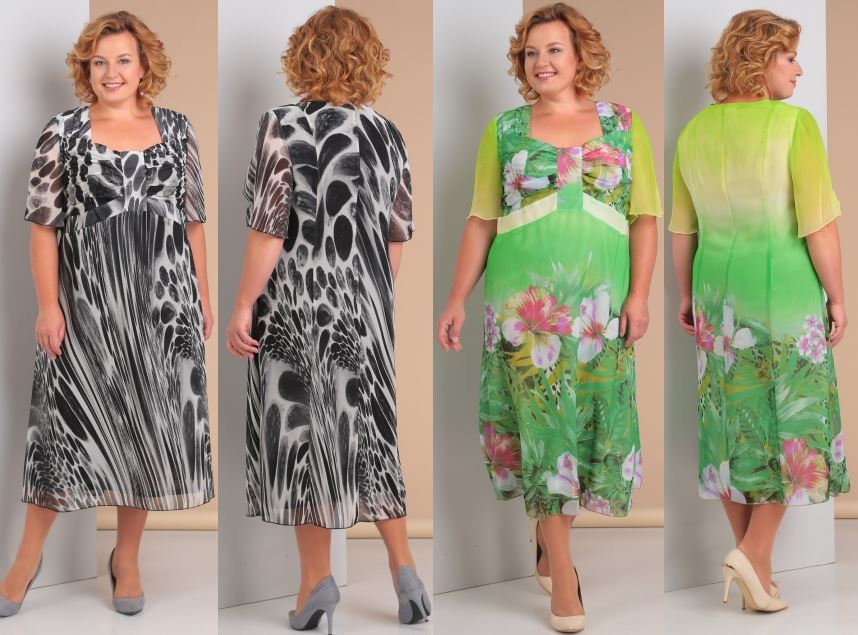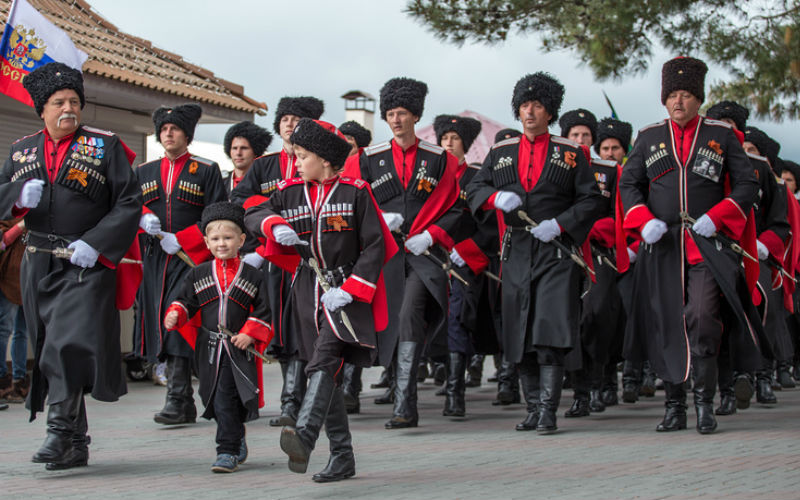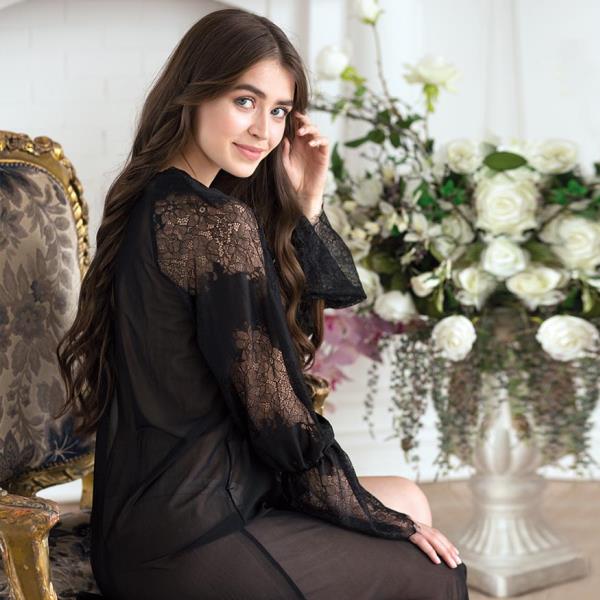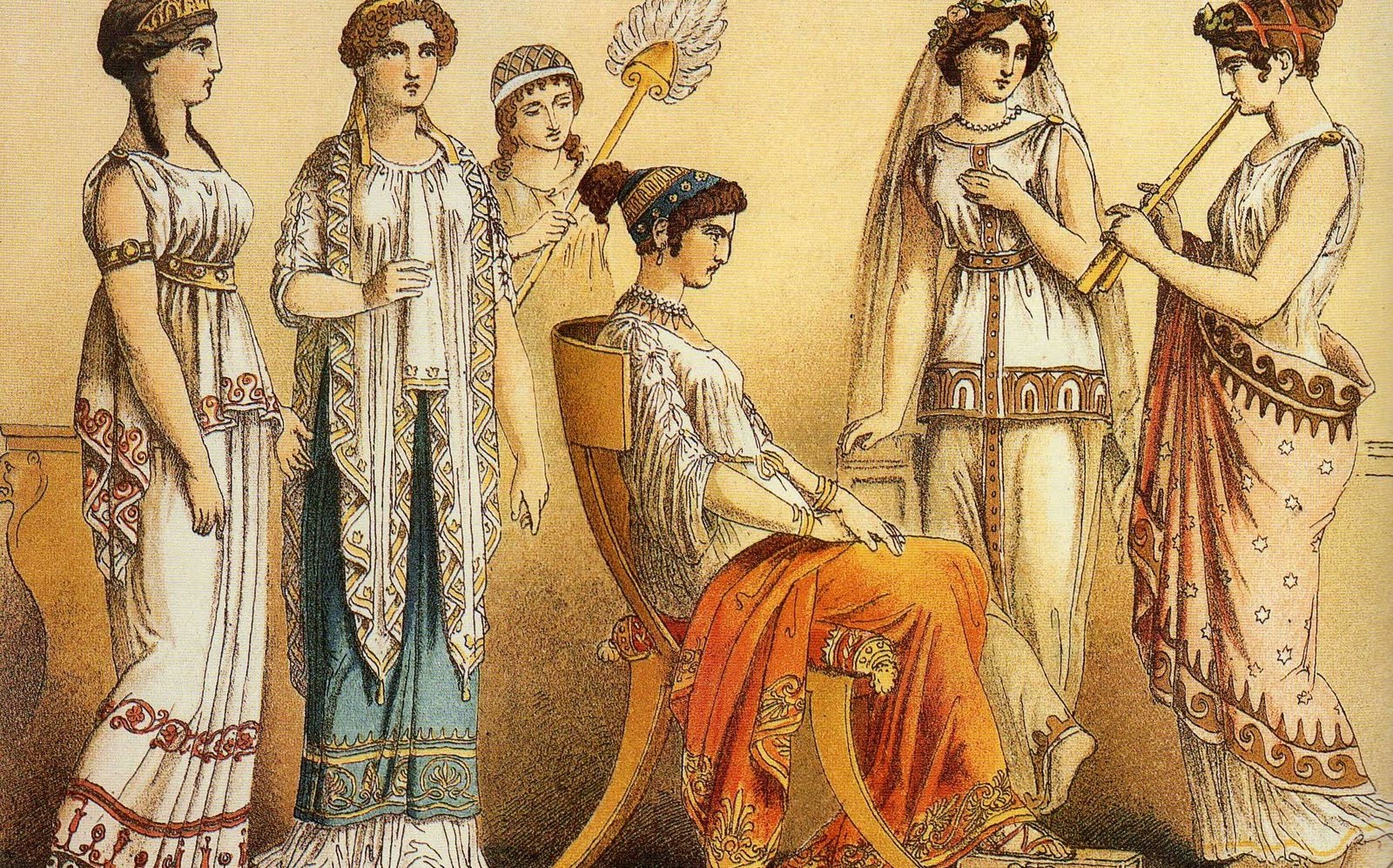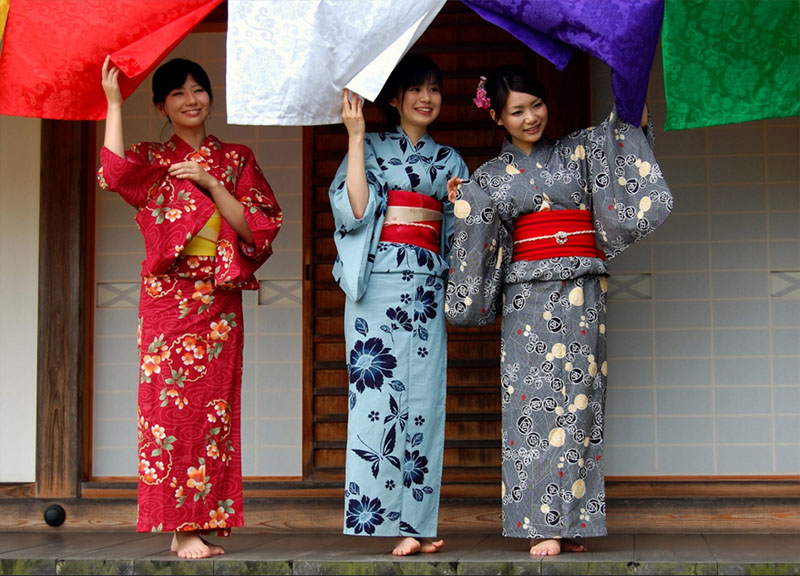For many centuries, Russian national clothing has preserved the cultural values of our people. The costume conveys the traditions and customs of our ancestors. The spacious cut, simple style, but beautifully and lovingly decorated details of clothing convey the breadth of the soul and the color of the Russian land. It is not for nothing that the revival of Russian origins can now be traced in modern fashion collections.
History of the costume
The clothing of the ancient Slavs is the national attire of the population of Rus' before the reign of Peter I. The style, decorations, and image of the costume were formed under the influence of:
- The main activities of the population (farming, cattle breeding);
- Natural conditions;
- Geographical location;
- Relations with Byzantium and Western Europe.
The clothes of the Slavs were made of natural fibers (cotton, wool, linen), had a simple cut and were ankle length. The outfits of the nobility were brightly colored (green, crimson, scarlet, azure), and the decorations were the most luxurious:
- Silk sewing;
- Russian embroidery with gold and silver thread;
- Decorated with stones, beads, pearls;
- Fur trim.
The image of clothing of Ancient Rus' began to be laid down in ancient times, in the 14th century. It was worn by the tsar, boyars, peasants until the 17th century.
Period of the 15th-17th centuries. The Russian national costume retains its originality and acquires a more intricate cut. Under the influence of Polish culture, open and fitted clothing appears among the Eastern Slavs. Velvet and silk fabrics are used. The noble princely and boyar classes had more expensive, multi-layered outfits.
Late 17th century. Peter I issues decrees prohibiting the nobility from wearing national costumes. Only priests and peasants were not affected by these decrees. The decree prohibited sewing and selling Russian costumes, which provided for fines and even confiscation of property. The Russian monarch issued them in order to adopt European culture and strengthen relations with Europe. This measure of instilling foreign tastes had a negative impact on national development.
The second half of the 18th century. Catherine II tried to return Russian originality to the European-style costumes of the nobility. This was reflected in the fabrics and splendor of the design of the outfits.
Patriotic War of the 19th century. The patriotic spirit of the population rises, which brings back interest in the national clothes of the Russian people. Noble ladies began to wear sarafans, kokoshniks. Outfits were sewn from brocade, muslin.
20th century. Due to strained relations with suppliers from Europe, there was a return to the style of clothing of Ancient Rus'. This was manifested in fashion trends with elements of Russian style.
Types
Ancient Russian national clothing was very diverse and was divided into festive and everyday attire. It also differed depending on the region, social class of the owner, age, marital status and occupation. But some features of the costume distinguished it from the clothing of other nationalities.
Features of Russian national clothing:
- Layering, especially among nobility and women;
- Free cut. For convenience, they were supplemented with fabric inserts;
- A belt was tied to decorate and hold clothes. The pattern embroidered on it was a talisman;
- Clothes made in Rus' were all decorated with embroidery and carried a sacred meaning, protecting from the evil eye;
- The pattern could be used to determine the owner's age, family, and nobility;
- Festive outfits were made from bright fabrics and richly decorated with trim;
- There was always a headdress on the head, sometimes in several layers (for married women);
- Each Slav had a set of ritual clothing, which was richer and more brightly decorated. They wore it several times a year and tried not to wash it.
The decoration of Russian clothing contains information about the clan, family, customs, and occupations. The more expensive the fabric and decoration of the costume, the more noble and rich the owner was considered.
Noble
The attire of the princely and boyar classes preserved the Russian style of clothing until the end of the 17th century. Traditionally, it was distinguished by luxury and multi-layeredness. Even the growth of territories and stormy international relations did not change the national identity of old Russian clothing. And the boyars and nobles themselves stubbornly did not accept European fashion trends.
During the 16th and early 17th centuries, the nobility's costume became more diverse, which cannot be said about peasant clothing, which had not changed for many centuries. The more layers there were in the outfit, the richer and more noble the owner was considered. The weight of a dress sometimes reached 15 kg or more. Even the heat did not cancel this rule. They wore long, wide clothes, sometimes open with a slit in the front. Outfits that emphasized the waist were beautiful. Old Russian women's clothing reached a weight of 15-20 kg, which made women move smoothly and majestically. This gait was the female ideal.
Old Russian clothes of princes and boyars were sewn from expensive fabrics brought from Italy, England, Holland, Turkey, Iran, Byzantium. Rich materials - velvet, satin, taffeta, brocade, red calico, satin - were brightly colored. They were decorated with sewing, embroidery, precious stones, and pearls.
Peasant
Clothing of ancient Rus' is one of the oldest types of folk art. Craftswomen conveyed traditions and origins of Russian culture through decorative applied art. The clothing of Russian peasants, although simple, created a harmonious image, complemented by jewelry, shoes, and headwear.
The main materials for sewing were homespun canvas or woolen fabrics of simple weave. Since the mid-19th century, factory-made fabrics with bright colored patterns (silk, satin, red calico, satin, chintz) have appeared.
Peasant clothing was highly valued, it was taken care of, altered and worn almost to the point of being worn out. Festive clothing was kept in chests and passed down from parents to children. It was rarely worn, 3-4 times a year, and they tried not to wash it.
After long days of work in the field or with cattle, the long-awaited holiday arrived. On this day, peasants put on their best clothes. Beautifully decorated, it could tell about the owner, his marital status, the area where he came from. The embroidery depicted the sun, stars, birds, animals, people. The ornament not only decorated, but also protected from evil spirits. Russian patterns on clothes were embroidered on the edges of the product: the neck or collar, cuffs, hem.
All the costumes differed from each other in color, style and decoration. And they conveyed the natural features of their native land.
Military
The Russian professional army did not always have a single uniform. In ancient Rus', warriors did not have a single uniform. Protective equipment was selected depending on financial capabilities and methods of combat. Therefore, even in small squads, the clothes and armor of Russian heroes were different.
In ancient times, men wore a cotton or linen shirt, belted at the waist, under their protective gear. On their legs were canvas trousers (breeches), which were gathered not only at the waist, but also at the ankle and under the knees. They wore boots made from a single piece of leather. Later, nagovitsy appeared - iron stockings to protect the legs in battle, and for the hands - bracers (metal gloves).
The main armor until the 17th century was chainmail made of metal rings. It resembled a long-tailed shirt with short sleeves. Its weight was 6-12 kg. Later, other types of body armor appeared:
- Baidana (larger, thinner rings) weighing up to 6 kg;
- "Plate armor" - metal plates 3 mm thick were attached to a leather or fabric base;
- "Scaly armor" was also attached to the base, but resembled fish scales.
The warriors' armour was complemented by a metal helmet with a spire on the head. It could be complemented by a half-mask and an aventail (chainmail net that protected the neck and shoulders). In Rus' in the 16th century, tegilyai (quilted cuirass) appeared. This was an elongated quilted caftan with a thick layer of cotton wool or hemp. It had short sleeves, a stand-up collar, and metal plates were sewn onto the chest. It was more often worn by poor warriors. Such protective armour of Russian warriors existed until the 17th century.
Details and their meaning in clothing
National clothing varied across the vast Russian territory, sometimes even significantly. This can be seen in photographs and museums. The images of people in Russian attire in paintings convey the versatility and originality of ancient Rus'. The skillfully crafted jewelry by craftswomen amazes with the complexity of the work.
Each region was famous for its decorative art. If the nobility tried to have rich and original clothes, unique to anyone, then the peasants decorated with embroidery of natural motifs, putting their love for Mother Earth.
Male
The basis of ancient Russian men's clothing was a shirt and trousers. All men wore them. The nobility wore them from expensive material with rich embroidery. The peasants wore them from homespun material.
Trousers-pants
Until the 17th century, trousers were wide, later they became narrower, tied with a lace at the waist and ankles. Trousers were tucked into shoes. The nobility wore 2 pairs of pants. The upper ones were often made of silk or cloth. In winter, they were lined with fur.
Shirt
Another obligatory garment in ancient Rus' for men was the shirt. For wealthy people it was an undergarment, and peasants wore it when going out without outerwear (caftan, zipun). The shirt had a slit at the neck in the front or on the side, more often on the left (kosovorotka). The trim on the neck and cuffs was usually made of expensive fabric, embroidered or decorated with braid. Bright designs on the braid were in the form of plant patterns. The shirt was tied with a silk or woolen cord, sometimes with tassels, and worn loose. Young people wore it on a belt, older people - lower, making a lapel above the waist. It played the role of a pocket. Shirts were sewn from linen, silk, satin fabric.
Zipun
A zipun was worn over the shirt. It was knee-length, with a belt and fastened end-to-end. The narrow sleeves were fastened at the cuffs with buttons. A beautifully decorated collar was attached to the neck. The zipun was most often worn at home, but young people sometimes wore it outside.
Caftan
When going out, noblemen wore a caftan. There were many styles, the common length was below the knees.
Types:
- Most often, the caftan was long, not fitted, with long sleeves. It was fastened end-to-end with 6-8 buttons. This ancient Russian clothing was decorated with a stand-up collar, decorated with embroidery and stones;
- They also wore a home wrap-around caftan with buttons, metal or wooden. In rich houses, gold buttons were used. Long sleeves were rolled up, but elbow-length options were more comfortable;
- Another style of caftan - chucha - was worn for horse riding. For comfort, it had side slits and shortened sleeves;
- Polish culture in the 17th century influenced the appearance of the caftan, which was tight-fitting and flared below the waist. The long sleeves were voluminous at the shoulder and tapered below the elbow.
Feryaz
The nobleman also had ceremonial clothing, called a cloak or feryaz, which was worn over a caftan. The length of the outfit reached the calves or the floor, it itself was trimmed with fur or decorated with a fur collar. The wide feryaz was fastened with one button. Dark green, dark blue cloth or gold brocade were used to sew the outfit.
Fur coat
If the caftan and feryaz were unavailable to peasants, then almost all social classes had a fur coat. Fur coats were sewn with the fur inside, expensive and not so. Voluminous ones with large sleeves reached the ground or were below the knees. Peasants wore hare and sheepskin coats. And rich, noble people sewed them from the skin of sable, marten, fox, arctic fox.
Headdress
A mandatory attribute of Russian clothing was a fur hat, resembling a high cap. The nobility decorated it with gold thread embroidery. At home, boyars and nobles wore a tafya, similar to a skullcap. When going out, they put on a murmolka and a cap made of expensive fabric with a fur trim over the tafya.
Shoes
The most common footwear among peasants were bast shoes. Not everyone had leather boots, so they were highly valued. Instead of boots, peasants wrapped their feet tightly in fabric and sewed leather onto the soles. The most common footwear among boyars, princes, and nobles in ancient Rus' was boots. The toes were usually turned up. Shoes were made of colored brocade, morocco, and decorated with multi-colored stones.
Women's clothing
The main women's clothing of ancient Russia was a shirt, a sarafan, and a poneva. Ukrainian and Belarusian culture influenced the formation of the folk costume of the southern regions of ancient Rus'. Women's attire consisted of a linen shirt and a poneva (an open skirt). On top, women wore an apron or apron, tied a belt. A high kika or soroka was required on the head. The entire outfit was richly decorated with embroidery.
The Slavic costume of the northern lands had a sarafan shirt and an apron. Sarafans were sewn from one piece of cloth or from wedges and were decorated with braid, lace, embroidery. The headdress was a scarf or kokoshnik decorated with beads, pearls. In cold weather, they wore long fur coats or short soul-warmers.
Shirt
Worn by women of all social classes, it differed in fabric and decorations. It was made of cotton, linen, expensive ones – of silk. The hem, collar and sleeves were decorated with embroidery, braid, applique, lace and other patterns. Sometimes dense patterns decorated the chest part. Each province had different patterns, ornaments, colors and other details.
Features of the shirt:
- Simple cut with straight pieces;
- The sleeves were wide and long, so that they didn’t get in the way, and bracelets were worn;
- The hem reached to the heels;
- Often the shirt was sewn from two parts (the top one was expensive, the bottom one was cheaper, as it wore out quickly);
- Richly decorated with embroidery;
- There were several shirts, but smart ones were rarely worn.
Sarafan
Old Russian women's clothing was worn until the 18th century by all social classes. They sewed things from canvas, satin, brocade, silk. They trimmed them with satin ribbons, braid, embroidery. At first, the sarafan looked like a sleeveless dress, then it became more diverse:
- Deaf - sewn from one piece of cloth folded in half, a neckline was made along the fold, and decorated with bright fabric;
- Open-front, beveled - appeared later and 3-4 panels were used to sew it. Decorated with ribbons, patterned inserts;
- Straight, open - sewn from straight fabrics that were gathered at the chest. Held on two narrow straps;
- A straight variety made of two parts - a skirt and a bodice.
Rich women wore a flared shushun sarafan. They sewed long sleeves to it, but did not wear them. The shushun was buttoned all the way to the bottom.
Poneva
The skirt is made of three pieces of woolen fabric. They wove at home, alternating wool and hemp threads. A cellular pattern was created. They decorated it with tassels and fringe. Young women decorated it more brightly. Only married women wore it, sometimes releasing a shirt at the waist. An apron or apron with a hole for the head was put on top of the skirt.
Outerwear:
- The summer coat was made of plain fabric and reached the calves. It was decorated with a fur collar;
- A dushegreyka is a short, slightly below the waist, quilted garment with a wadded lining. It was trimmed with bright fabrics, brocade, satin and fur. It was worn by peasants and the nobility;
- A fur coat with the fur inside was worn by women of all classes; peasant women wore furs cheaper.
Headwear
The Russian style clothing is completed by a headdress, which was different for unmarried and married women. Girls had part of their hair open, and ribbons, hoops, bandages, and openwork crowns were tied to their heads. Married women covered their heads with a scarf over a kiki. The headdress of the southern regions was in the form of a shoulder blade and horns.
In the northern regions, women wore kokoshniks. The headdress resembled a round shield. Its hard base was decorated with brocade, pearls, beads, beads, and, for the nobility, expensive stones.
Children's
There was little children's clothing, it was valued, it looked like adult attire. Younger children wore out the older ones. For the very little ones, it could have short sleeves, for convenience, even resemble a dress.
The first diaper for a newborn boy was his father's shirt, and for a girl - her mother's. In ancient Rus', clothes for children were remade from parents' outfits. It was believed that the energy and strength of the parents would protect the baby from any illnesses, someone else's evil eye. Shirts for boys and girls did not differ, they were thick and ankle-length. Clothes were lovingly decorated with mother's embroidery, which was a talisman for the child.
At about 3 years old, children were given their first shirt made of new fabric. And 12-year-old girls were given a new poneva or sarafan, boys – pants-ports. For teenagers, the outfits were already more varied, repeating adult models: kosovorotka, pants, fur coats, headdresses.
Ethno style in modern fashion
Traditional clothing of Ancient Rus' has long gone down in history. But fashionable ideas of designers look spectacular in a modern outfit with elements of Russian style. Ethnic image is in fashion now.
Dresses in Russian design attract with their modesty, restraint with a shallow neckline, medium length or almost to the floor. Russian patterns on clothes add sophistication and originality to the outfit:
- Floral motifs on fabric;
- Hand embroidery of plant patterns;
- Sewing, appliques;
- Decorated with beads and ribbons;
- Lace making, crocheting, knitting.
The trim is done on the cuffs, hem, neck or yoke. Natural fabrics (cotton, linen) are very popular. And the delicate colors (blue, beige, green, pistachio) convey femininity and purity. The style of the dress or sundress can be different, both loose and fitted with a slightly flared skirt, or "sun". Sleeves can be long or short.
The image in folklore colors is complemented by jewelry, accessories (large earrings, beads, belt) and outerwear. This can be a vest, coat or warm fur coat, muff. On the head, a fur hat or brightly colored scarves will complement the image. Fashion designers sometimes use the effect of multi-layering in modern outfits with changes in the volume and shape of the sleeves.
Nowadays, Russian clothing sets for men, women, and children bring national flavor to folk festivals and celebrations. A new trend — a party in Russian folk style — brings guests back to Ancient Rus', its traditions, round dances, and games.
Russian national clothing is the keeper of cultural roots. The artistic image has been preserved through many centuries. Now there is a revival of interest in Russian traditions, holidays, culture. New modern outfits appear that use elements of Russian costume.
Video


